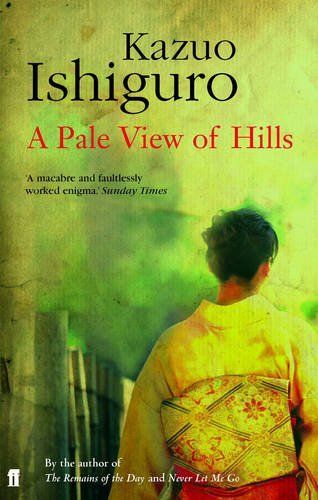
A Pale View of Hills
*Kazuo Ishiguro's new novel Klara and the Sun is now available to preorder* From the Nobel Prize-winning author of The Remains of the Day and Never Let Me Go In his highly acclaimed debut, Kazuo Ishiguro tells the story of Etsuko, a Japanese woman now living alone in England, dwelling on the recent suicide of her daughter. Retreating into the past, she finds herself reliving one particular hot summer night in Nagasaki, when she and her friends struggled to rebuild their lives after the war. But then as she recalls her strange friendship with Sachiko - a wealthy woman reduced to vagrancy - the memories take on a disturbing cast.
Reviews
shain@shain
tea@cagedvenus
Gabe Cortez@gabegortez
Sarah Sammis@pussreboots
🏹@kenzia
Julie Rubens@julierubens
Cody Degen@codydegen
Denisse Garcia Ramírez @den_gr
Revna@revna
Anna Berg@annabergb
Rebekah Holland@bekah97
Caroline Mao@northcaroline
Trevor Berrett@mookse
Josephine Lemonade @josephinelemonade
Andrada D@andragel
Christine Liu@christineliu
Shidehdeishidi@shideh
Alithea@alithea
han@pistachio
Claire Jorgensen@clairejorgie
cha ☁️@inpaperback
Zoilo Comia@zlccco
Libby@libibiyabbay
Ashley @ash24
Highlights
Denisse Garcia Ramírez @den_gr
Denisse Garcia Ramírez @den_gr
Denisse Garcia Ramírez @den_gr
Denisse Garcia Ramírez @den_gr
Denisse Garcia Ramírez @den_gr